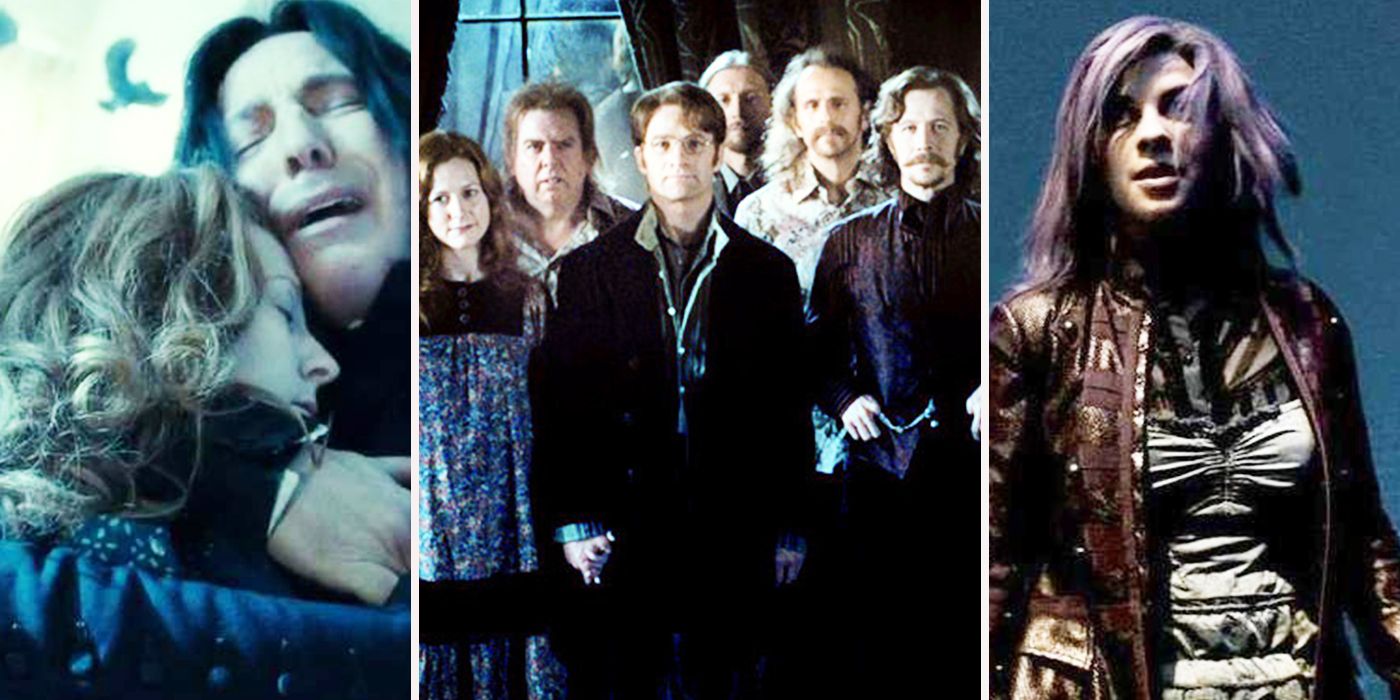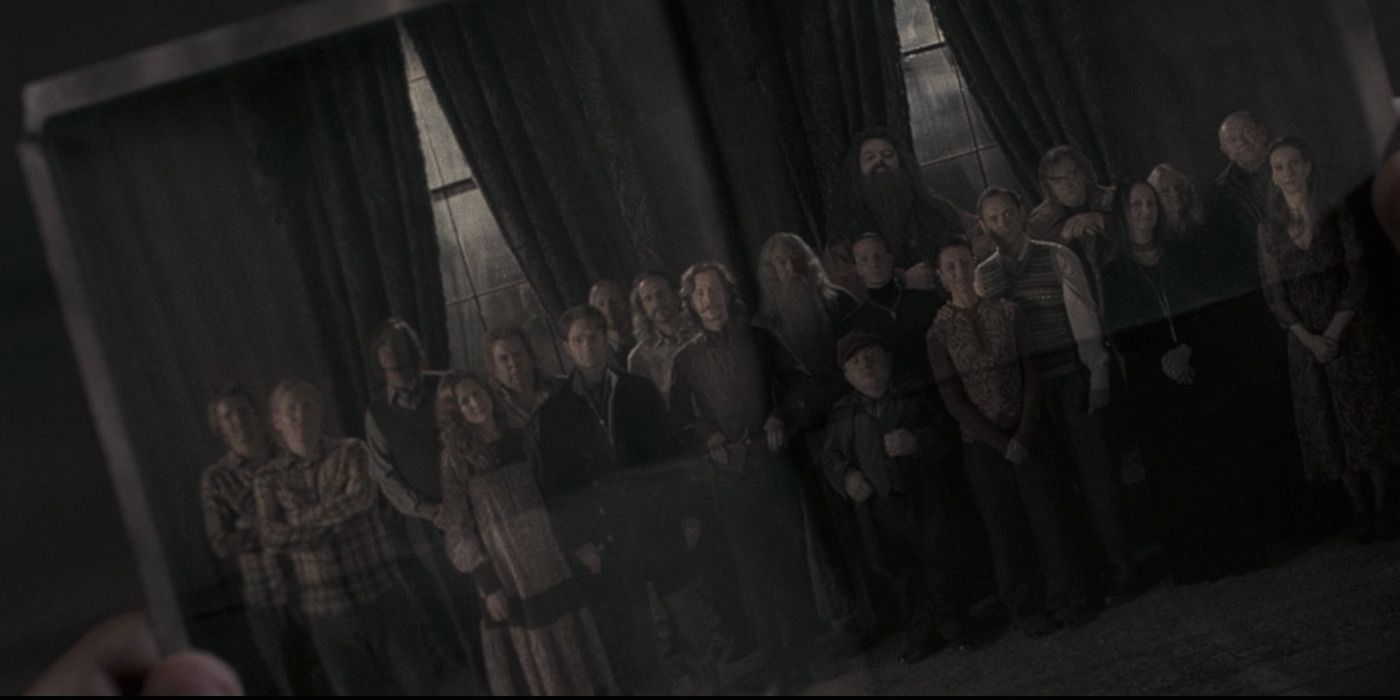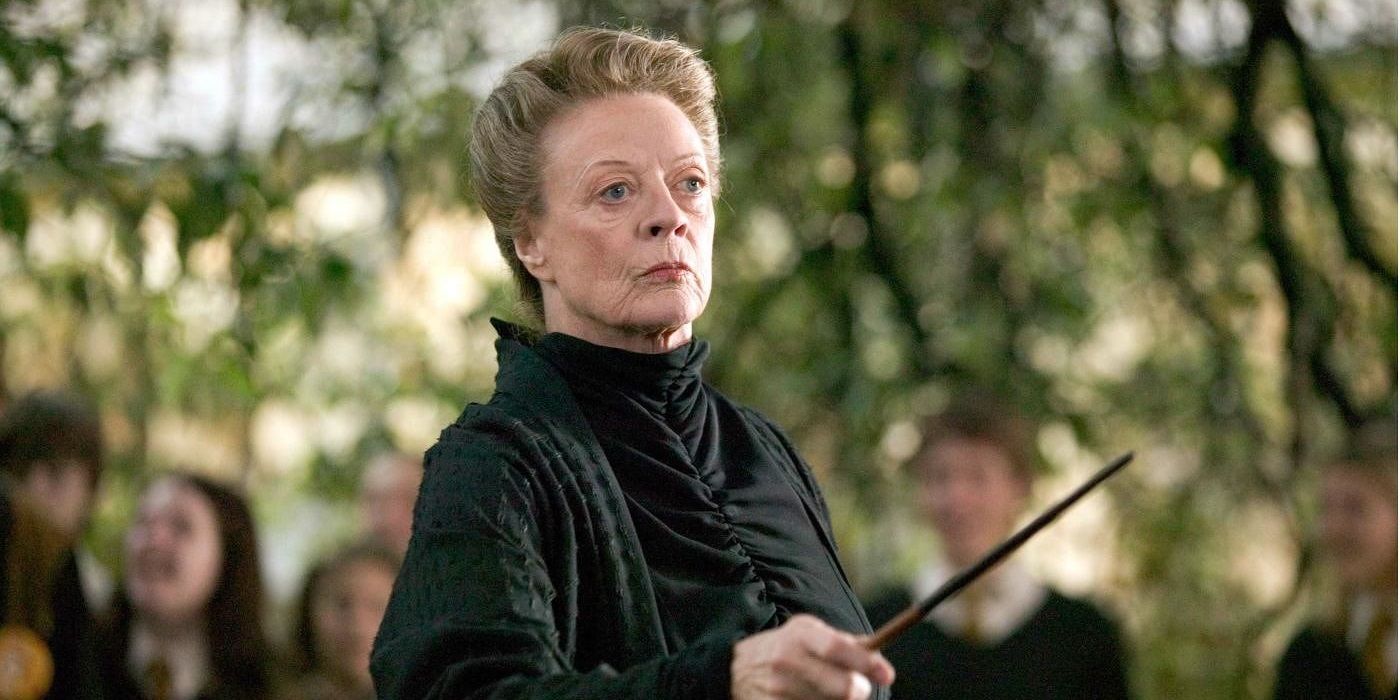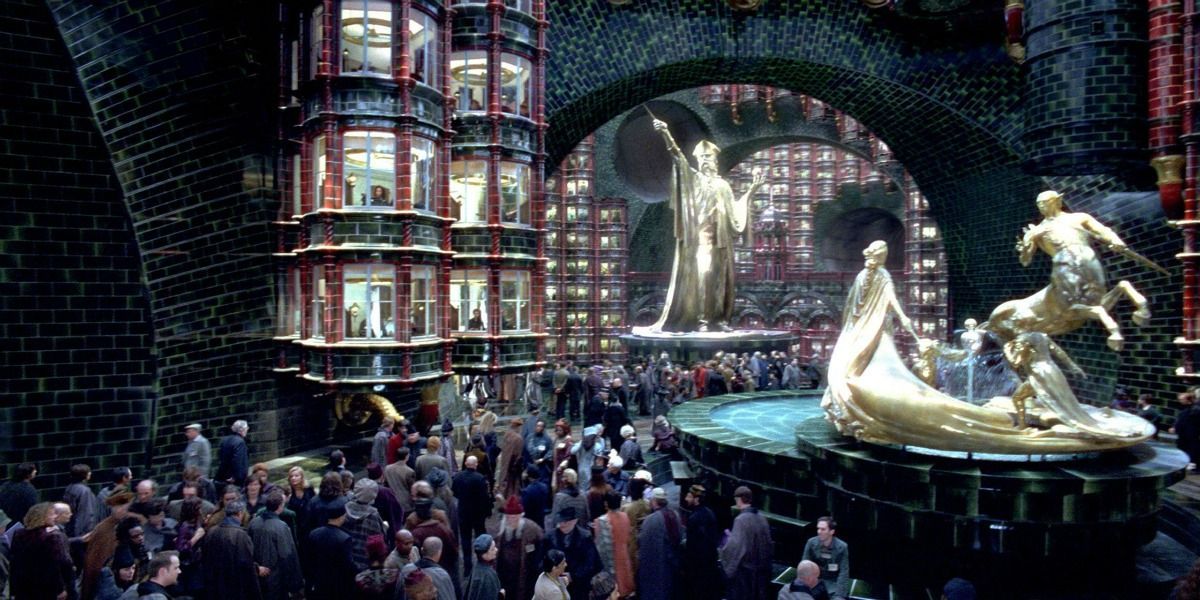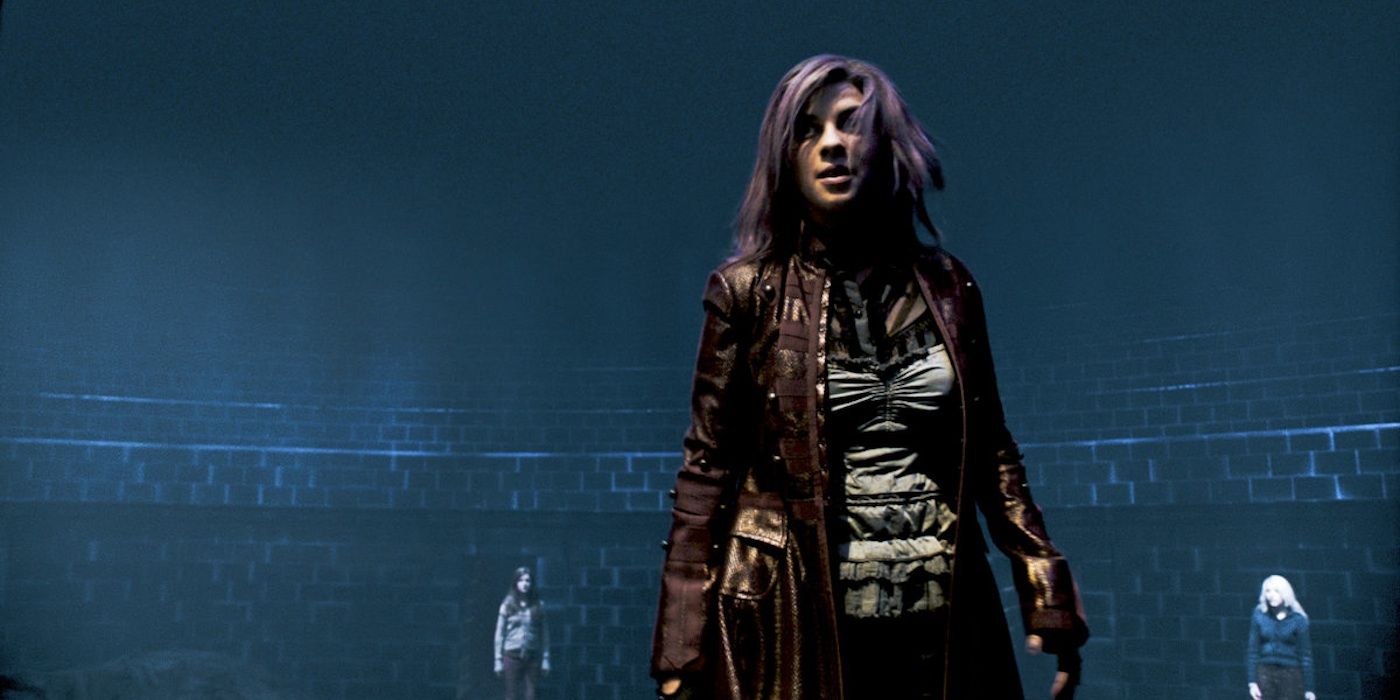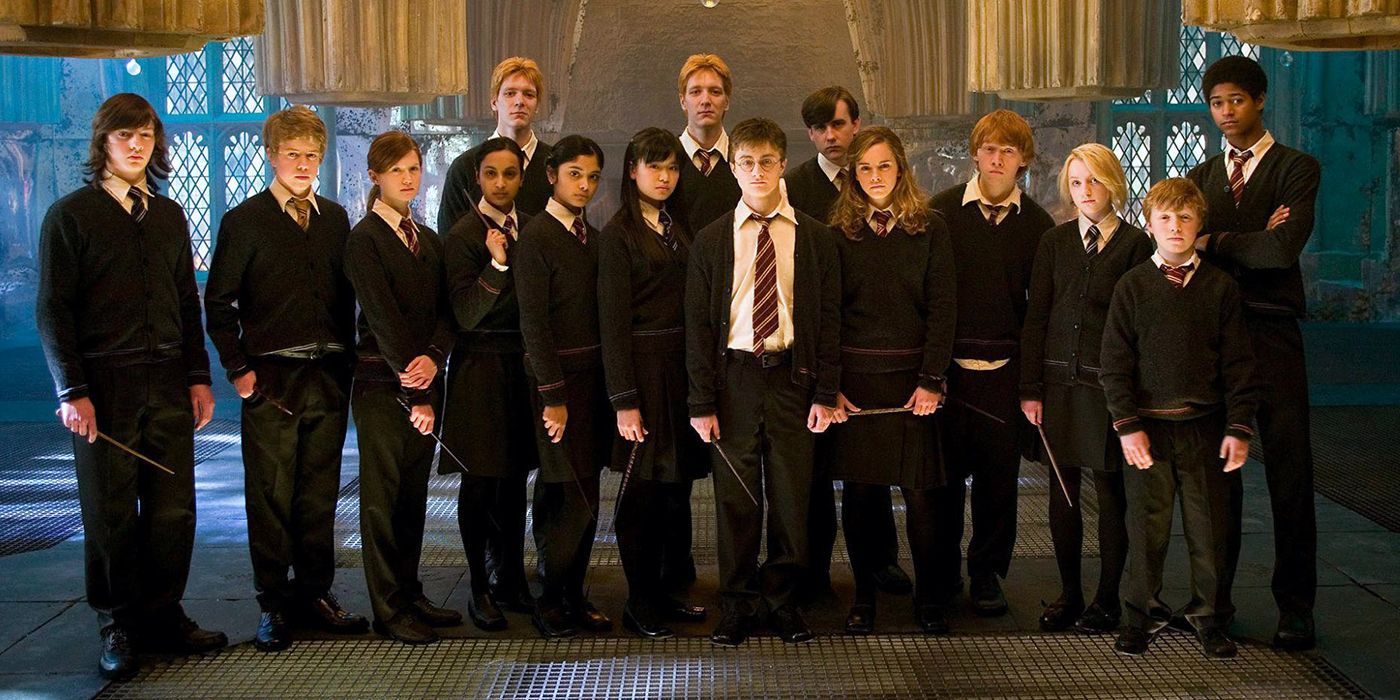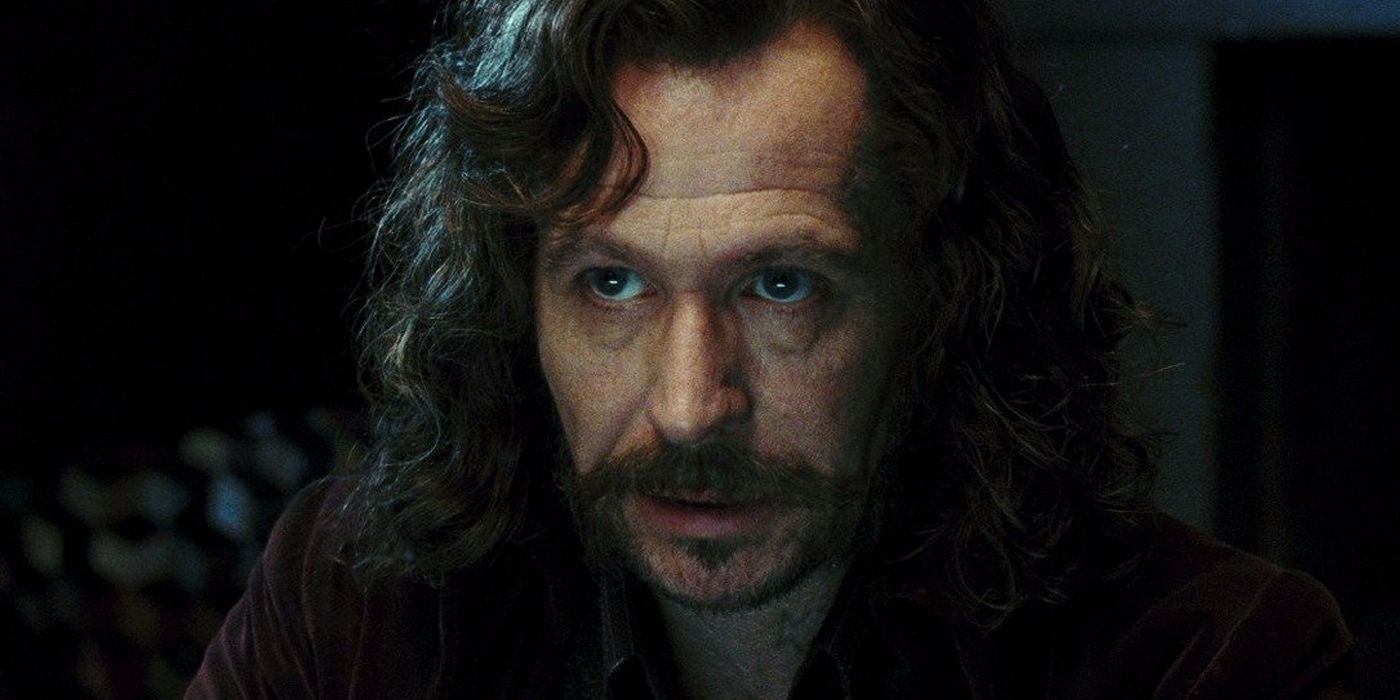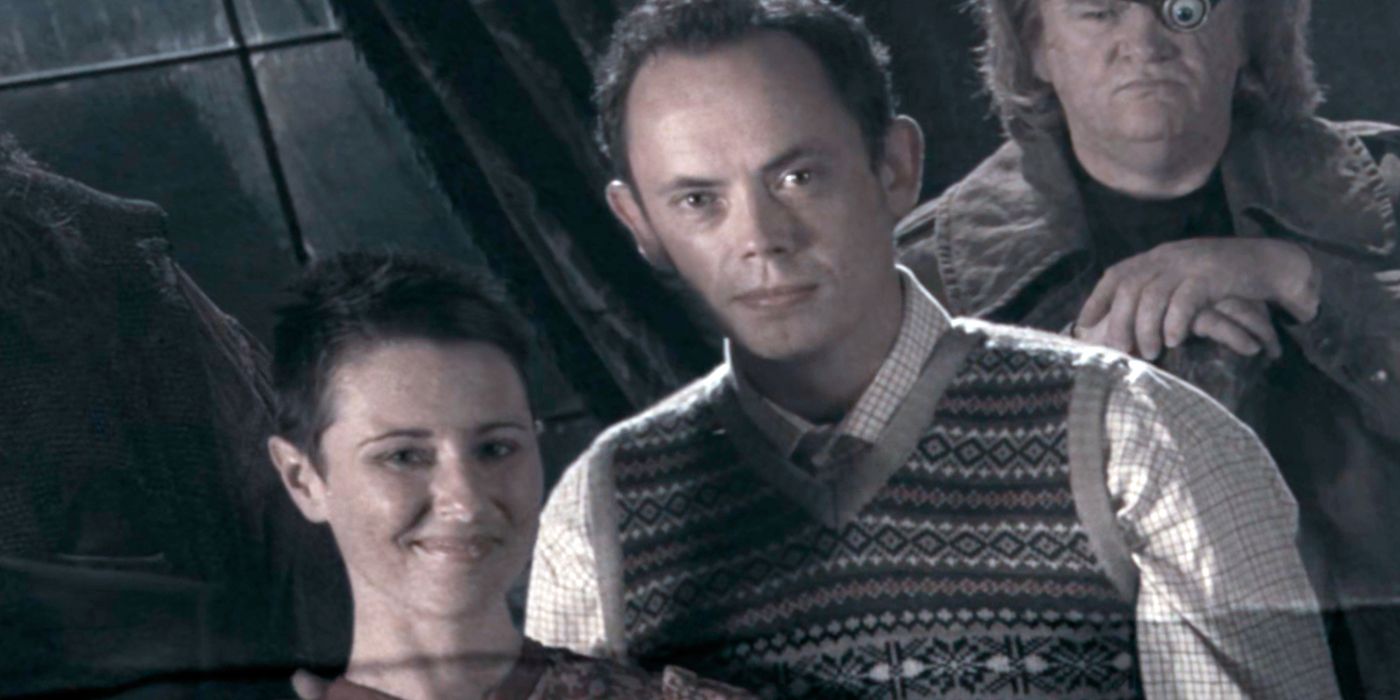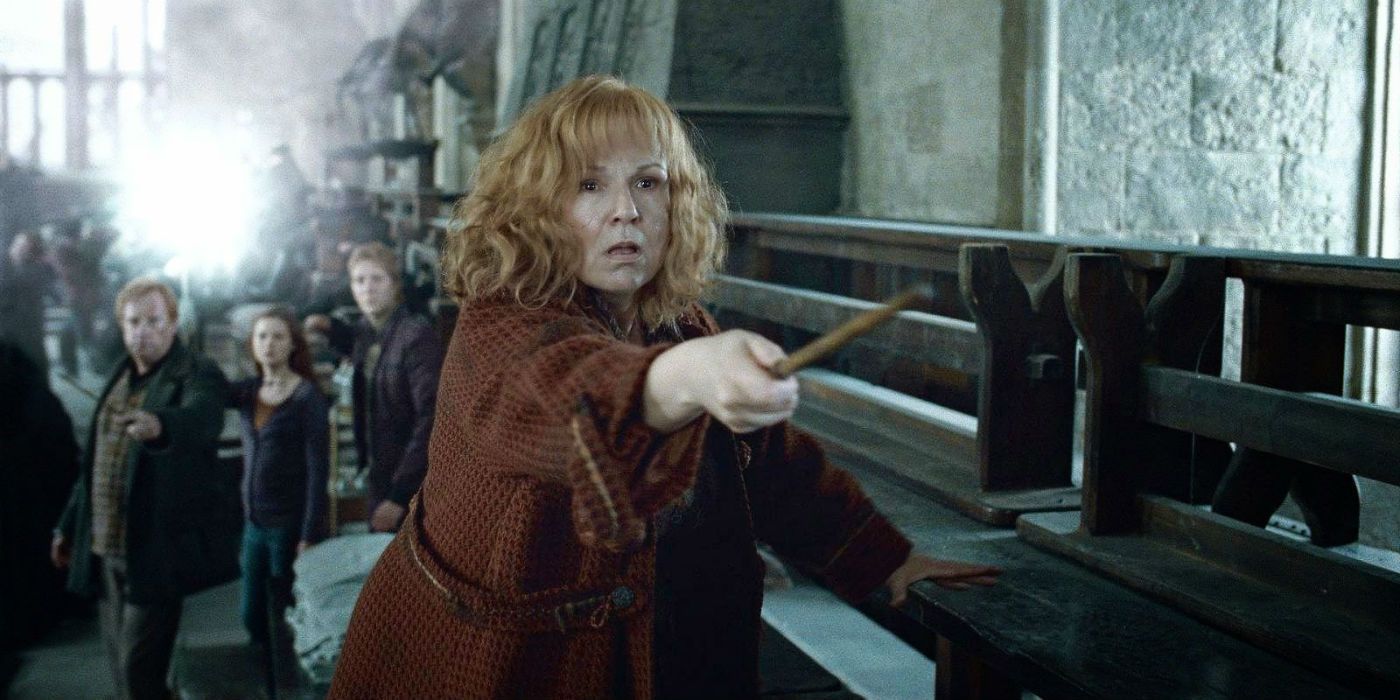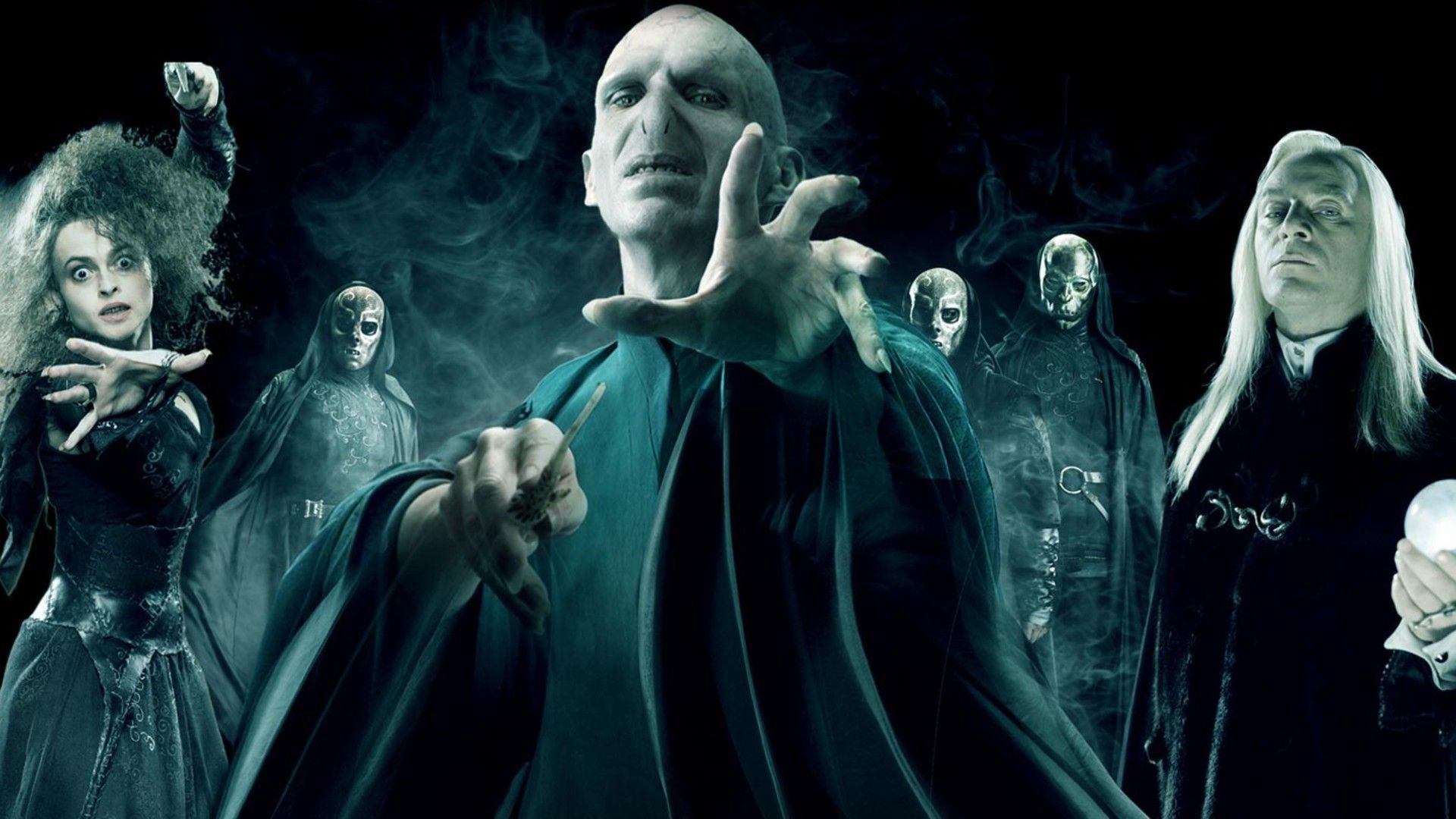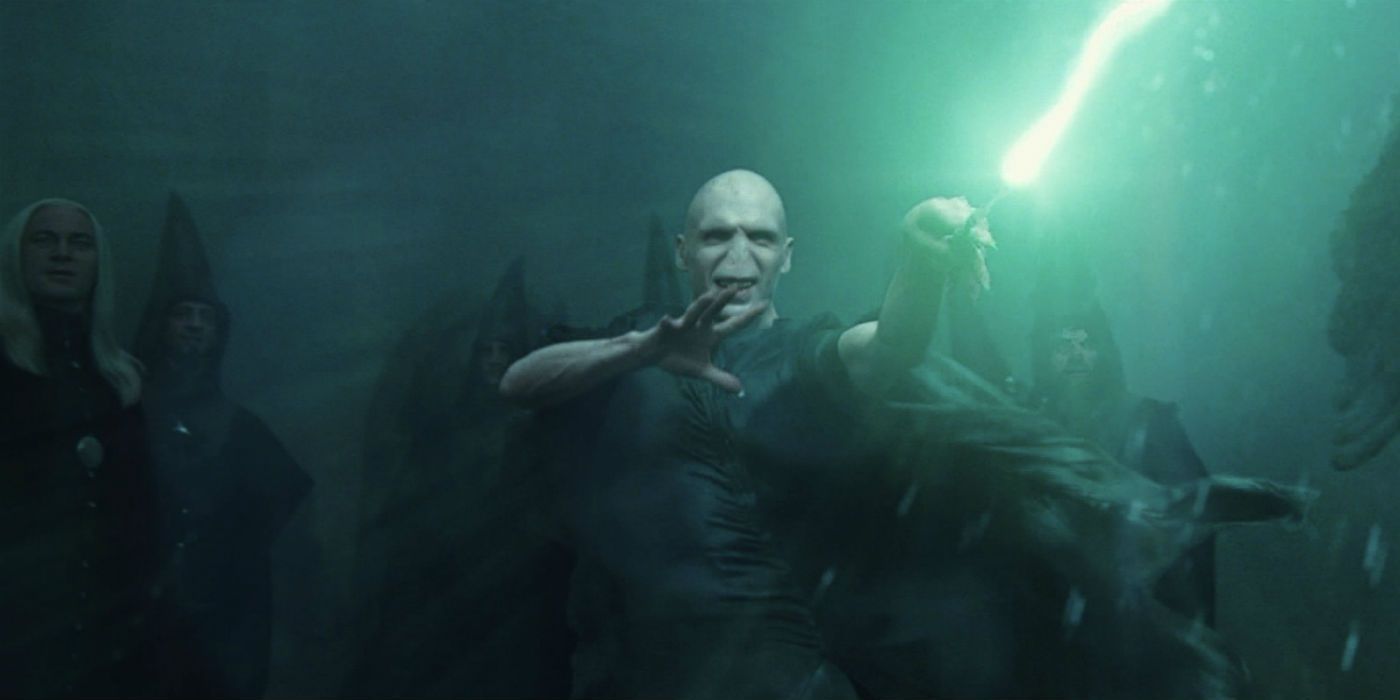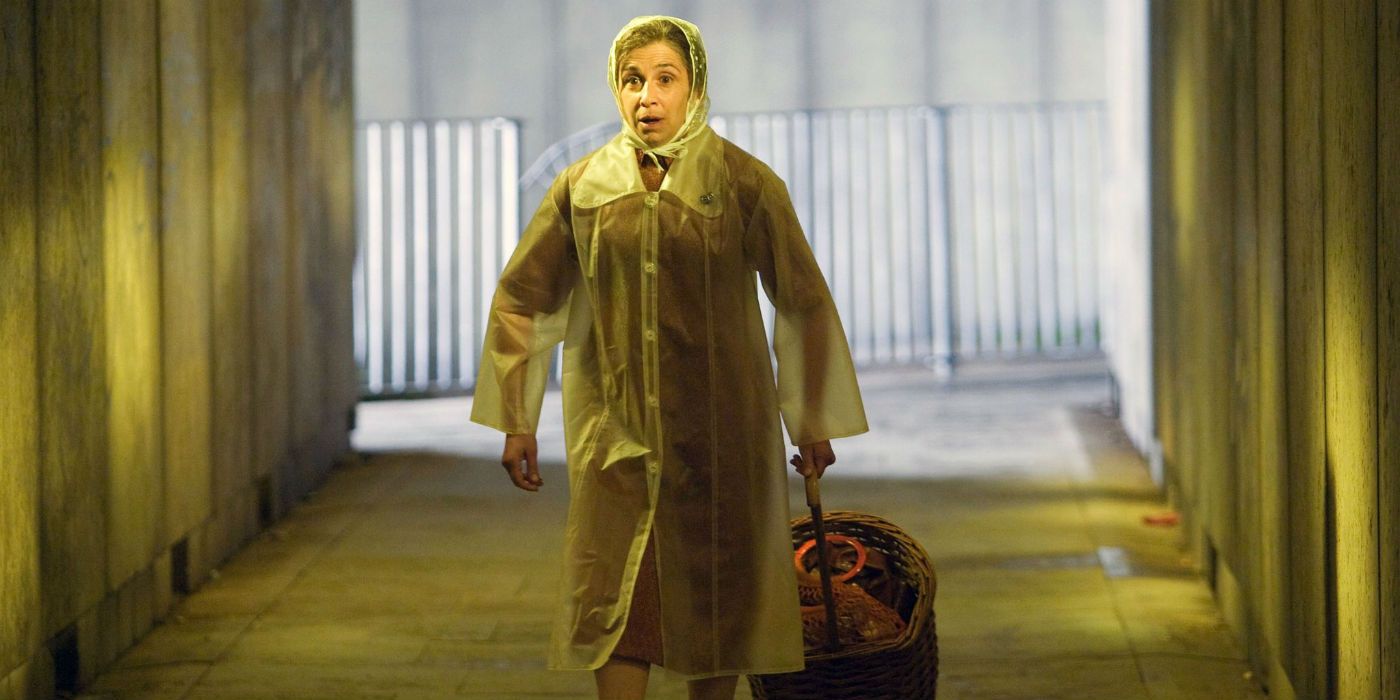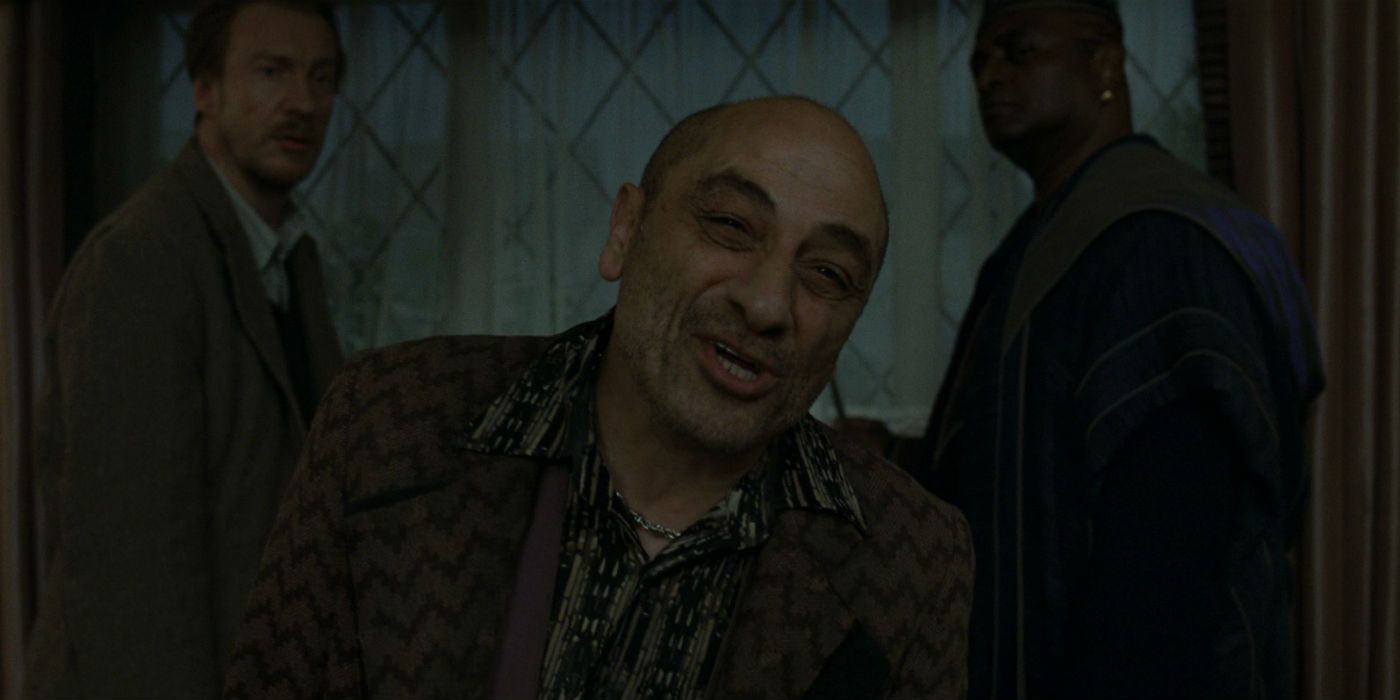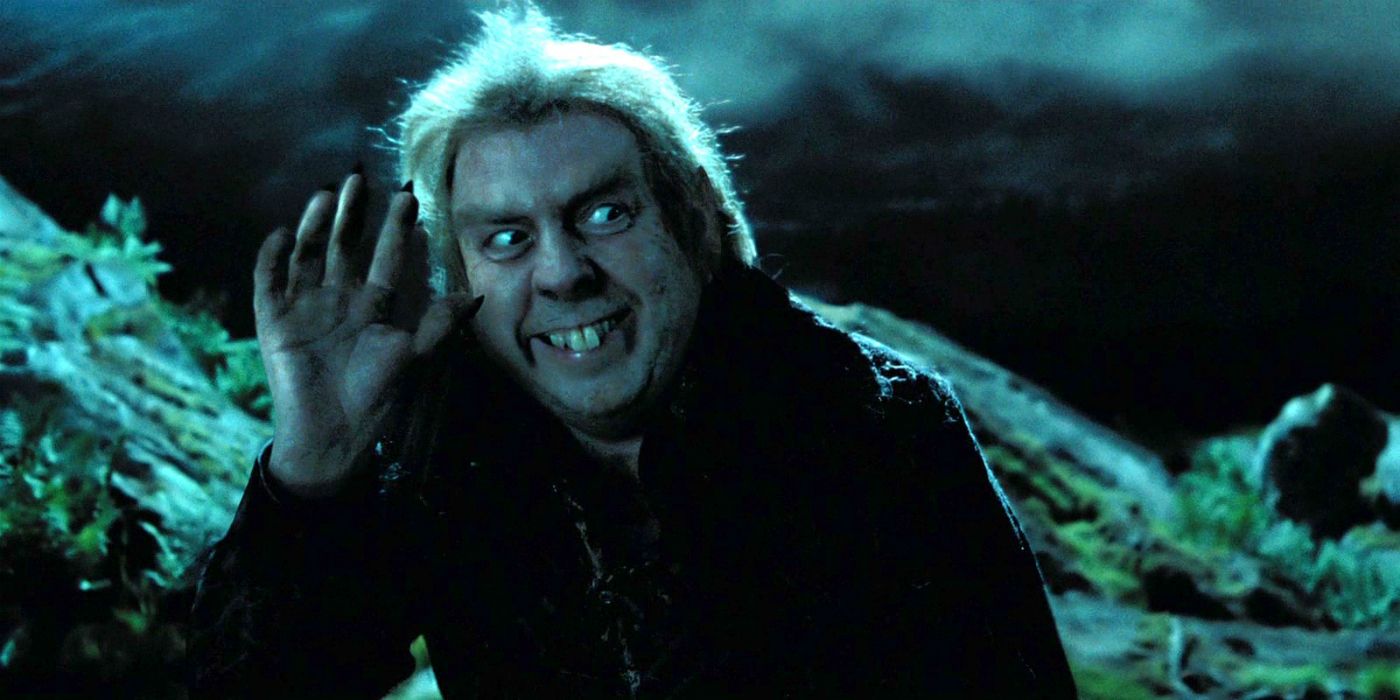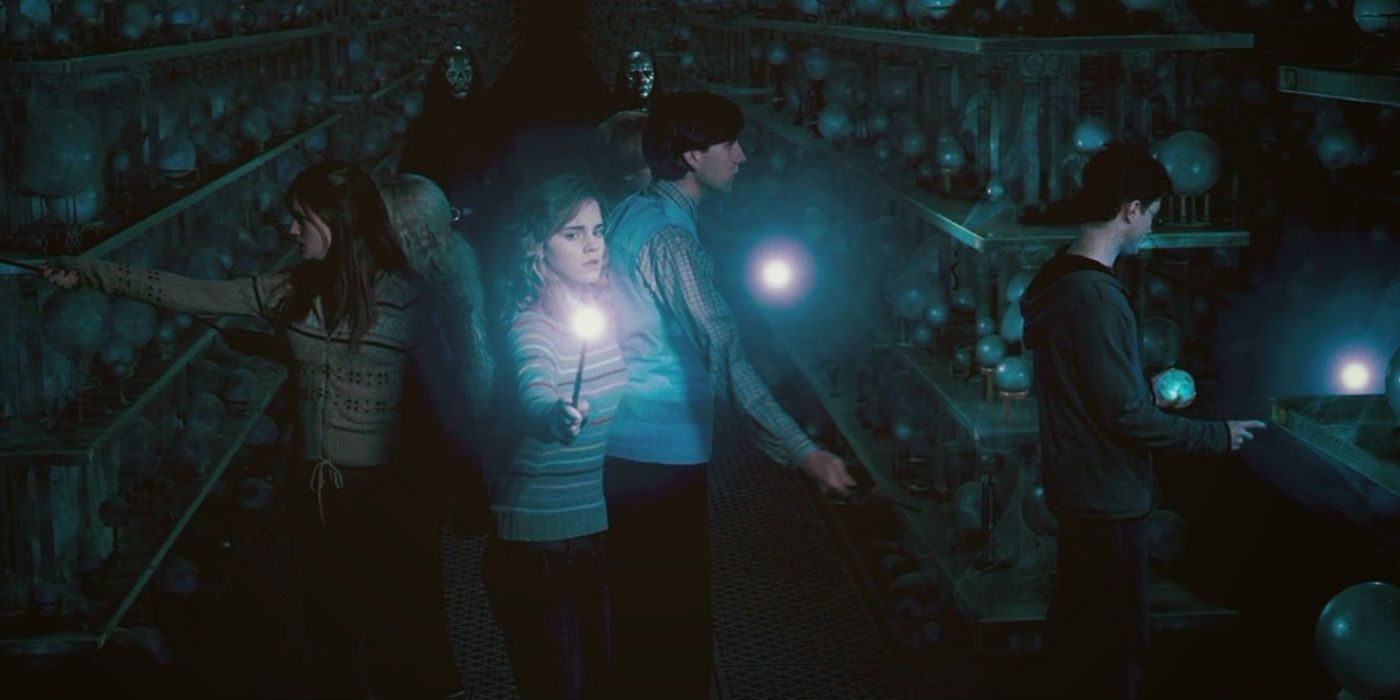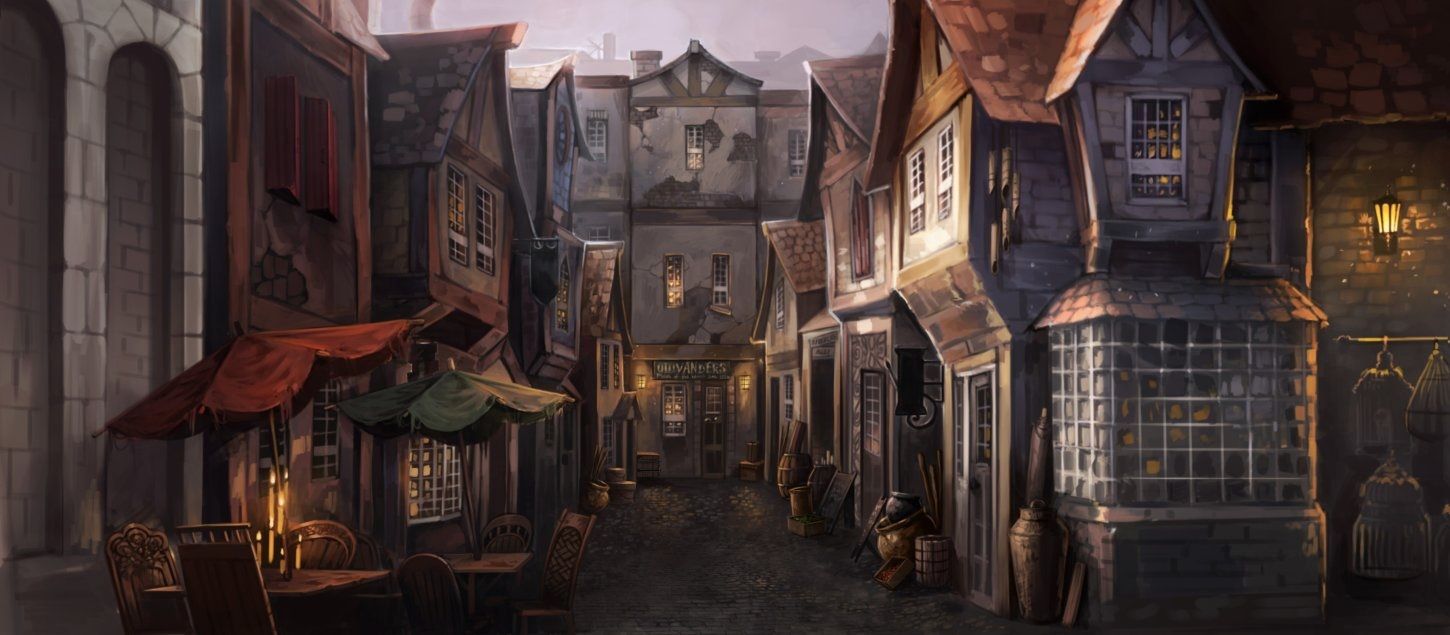In order to combat Voldemort and his followers, Albus Dumbledore created the Order of the Phoenix during the First Wizarding War. The secret society was integral to defeating the evil lord at the cost of losing many of their members. At the end of Harry Potter and the Goblet of Fire, rising from the ashes much like their namesake, the Order of the Phoenix was born again under Dumbledore's direction. Learning from the past and faced with new challenges, they once again fought and defeated Voldemort's army, but not without their share of casualties.
Not everything is as straightforward as audiences might believe it to be, though. The First Order--not to be confused with the villains from the Star Wars trilogy--faced challenges but also had advantages when fighting the Dark Lord the first time around; challenges and advantages that would change for the Second Order when Tom Riddle returned to power. The Order's relationship with the Ministry of Magic and the larger magical world was even more delicate than many realized. Although they lived and fought through both the First and Second Wizarding Wars, certain characters could not be part of the Order both times.
Here are 15 Things You Didn't Know About The Order Of The Phoenix.
15. Many Considered The Order A Radical Group
While Harry Potter fans think of the Order of the Phoenix as "the good guys" many of those aware of the Order's existence in magical society actually viewed them as a radical group. The Order's aims were noble and fans know that, other than Peter Pettigrew, their members were loyal and courageous people fighting for what was right.
But it's important to remember that the Order was a secret society operating mostly outside the parameters of the Ministry of Magic. The secrecy and the numerous risks that the Order presented were troubling at best for many on the outside. Without the benefit of viewing the Order and its members like audiences can, it's easy to see how a marginalized group addressing this issue, as opposed to the global magical authorities, could be viewed as radical.
14. Minerva McGonagall Wasn't Always A Member Of The Order
Minerva McGonagall is such an essential member of the Order of the Phoenix during the Second Wizarding War that it's difficult to imagine she wasn't a member during the First. McGonagall may have perceived the Order as a radical group as she didn't join, but still took steps to defy Voldemort. Using her abilities as an Animagus, McGonagall spied on Voldemort's followers in her tabby cat form and provided important information to the Ministry of Magic.
Given the Ministry's refusal to accept Voldemort's return and her deep relationship with Albus Dumbledore, it's no surprise that McGonagall joined the Order the second time around. She could no longer be a secret informant for a government that would ignorantly refute any information she brought back. Dumbledore and the Order allowed her to have a chance at making a real difference, like she had multiple times, especially with the leadership role she undertook at the Battle of Hogwarts.
13. Relationship With The Ministry Of Magic
The Order and the Ministry were allies during the First, but not the Second Wizarding War. Despite being perceived as a radical group, the Ministry recognized the Order's value and teamed up with them to combat Riddle's army during the First Wizarding War. This led to Aurors such as Alastor "Mad Eye" Moody joining the Order, which helped greatly in some of the Order's most secretive and critical missions.
The relationship between the Order and Ministry during the Second Wizarding War is rather well-known, but another matter entirely. First of all, Cornelius Fudge's persistent denial of Voldemort's return prevented any alliance.
The indisputable proof of Voldemort's return and the replacement of Rufus Scrimgeour as Minister of Magic didn't really affect the nature of the relationship due to a great deal of distrust and isolation being already sown between the Order and Ministry. Scrimgeour didn't help these dynamics through his constant suspicions and distrust of Dumbledore, even after his death.
The lack of an alliance between the Order and the Ministry facilitated Voldemort's army's access at taking complete control of the Ministry during the Second Wizarding War.
12. Kingsley Shacklebolt And Nymphadora Tonks Were Secret Members
While the Order was a secret society, those aware of its existence knew Dumbledore as the leader, as well as many of Dumbledore's closest associates from Hogwarts and his past. This made members like Kingsley Shacklebolt and Nymphadora Tonks particularly valuable. Especially during Harry Potter and the Order of the Phoenix, almost no one knew they were members operating outside the Order.
Both Tonks and Kingsley worked at the Ministry and could provide valuable information to the Order. Considering neither Tonks nor Shacklebolt had been part of the Order during the First Wizarding War, they were not known as longtime associates of Dumbledore. They put themselves at risk at a time when the Ministry fervently denied Voldemort's return, and would've been reprimanded if the Ministry somehow found out.
11. The Order And Dumbledore's Army Were Almost Swapped
In early drafts of Harry Potter and the Order of the Phoenix, the Order and Dumbledore's Army were opposites. The secret society of adults fighting Voldemort's army were called Dumbledore's Army, while the Hogwarts student secretly defying Dolores Umbridge were called the Order of the Phoenix.
Fortunately the names were swapped. Dumbledore's Army, being a more aggressive name, fit better with a group of teenagers rebelling and organically growing into something bigger, more important. The Order of the Phoenix has an air of mystery and formality better associated with a secret society of mages. Besides, it sounds more natural for teenagers to refer to their secret group as DA rather than TOOTP.
It's easy to see how the names were switched at one point, as the two groups worked closely together and certain characters ended up belonging to both.
10. Most Potterwatch Passwords Were The Names Of Deceased Order Members
One of the many collaborative efforts between the Order and Dumbledore's Army was Potterwatch: a pirate radio program that communicated important events not reported by the Ministry, thus out of Voldemort's reach. In order to reach the right audience, passwords, which were announced at the end of each broadcast, were needed to tune in to any and all Potterwatch shows.
Almost all the passwords were the names of deceased Order members - they could be the person's first or last name, but were often the character's nicknames such as "Padfoot" or "Mad-Eye." Names of current Order members weren't used in order to protect their identities and whereabouts. The hosts and guests on the show used code names that wisely didn't belong to members of the Order such "River," "Rodent," "Romulus," and "Royal."
9. Many Order Members Belonged To The Sacred Twenty-Eight
The Sacred Twenty-Eight were twenty-eight magical families considered to truly be pure-blooded as of the 1930s. While their pure-blood status seems perfect for Voldemort's agenda, many members of the Order actually belonged to the Sacred Twenty-Eight.
The Longbottoms, Prewetts, Shacklebolts, and Weasleys all belonged to the Sacred Twenty-Eight. Notably, Frank and Alice Longbottom were part of the members of the First Order, the Weasley family also made up a considerable amount of the Second Order, even volunteering their home, the Burrow, as headquarters in the wake of Dumbledore's death. Molly Weasley's Prewett brothers were key members of the First Order, and of course, there's Kingsley Shacklebolt's extensive involvement with the Second Order.
As pure-bloods, they could've thrived under Voldemort's reign, but they chose the more difficult, dangerous path to fight for what was right.
Of course, other Sacred Twenty-Eight families like the Malfoys and Lestranges were ardent followers of Riddle's army, but it's important to recognize that individuals from many of the families were members of the Order of the Phoenix at some point.
8. Molly Weasley's Involvement With The Order
Molly, whose maiden name is Prewett, had two brothers who were prominent members of the Order during the First Wizarding War: Fabian and Gideon. Sadly, both Fabian and Gideon were brutally dismembered by five Death Eaters, including Antonin Dolohov.
Molly Weasley's involvement with the Order during the Second Wizarding War and her brothers' involvement during the First Wizarding War would make one assume she was a member of the First Order. However, there is no explicit evidence that she was part of the Order before the Second Wizarding War. This likely has nothing to do with her stance in the matter and more to do with the fact she was busy with her family during the First Wizarding War, while many of the children were quite young at the time. During the Second Wizarding War, Molly Weasley was one of the Order's most important members, culminating in her epic duel with Bellatrix Lestrange.
7. Death Eaters Outnumbered Order Members 20:1
While it's well-known that the Order was outnumbered by Voldemort's followers, calculations show the odds were even worse than imagined during the First Wizarding War. Death Eaters outnumbered the Order 20 to 1. The deaths of Fabian and Gideon Prewett spoke to these odds, as Mad-Eye told Harry that they fought like heroes when attacked by five Death Eaters and were brutally murdered, which likely came down to numbers.
During the First Wizarding War, the Order fought alongside the Ministry of Magic, a luxury that they were not afforded during the Second War. The 20 to 1 ratio provides further insights into why the Order might've been seen as such a radical group, but mostly shows how truly miraculous it was when Voldemort and his followers lost the war to them.
6. Death And Permanent Incapacitation
It's no secret that many members of the Order died or were permanently incapacitated during the First Wizarding War. The actual percentage is truly astounding. Taking all known Order members into consideration, 44% of the Order was killed or permanently incapacitated during the First Wizarding War. These statistics particularly highlight the bravery of individuals like Albus Dumbledore, Remus Lupin, Sirius Black, among others who'd lost almost half their comrades during the First Wizarding War, but continued the fight upon Voldemort's return.
In the case of Frank and Alice Longbottom, they were permanently incapacitated; a better fate than some of their fallen comrades. After the First Wizarding War, they were tortured by a group of Voldemort's most loyal Death Eaters to the point they could no longer function, living out the rest of their years at St. Mungo's Hospital. This technically contributes to the statistics from the First Wizarding War since their incapacitation took place so close to its conclusion.
5. Mrs. Figg Was Part Of The Order Before Harry Ever Lived With The Dursleys
Arabella Figg is mostly remembered as the neighborhood cat lady, later revealed as a Squib, who had been tasked by Dumbledore with watching over Harry Potter. She also helped Harry after the Dementor attack in Harry Potter and the Order of the Phoenix, which means her role is more extensive than fans realize, as she inevitably was part of the Order during the First Wizarding War.
When Voldemort returned at the end of Harry Potter and the Goblet of Fire, Dumbledore told Sirius to contact the "old crowd" which referred to members of the Order from the First Wizarding War. Dumbledore only mentions a few names, one of which is "Figg." Uttered within the same sentence as names like Remus Lupin and Mundungus Fletcher, it's clear that Mrs. Figg was also part of the First Order.
While her role in recent years had been to watch over Harry on Privet Drive, she must've had a role within the Order before Harry ever got there. It would further explain why Dumbledore entrusted her with such an important mission for all those years.
4. Why Mundungus Fletcher Was Part Of The Order
Mundungus Fletcher always seemed like a selfish, opportunistic, out of place member of the Order of the Phoenix. Yet, he was part of the Order during both Wizarding Wars, and one of the first names Dumbledore mentioned when telling Sirius to contact the "old crowd."
While it's never been explicitly stated, the reason Mundungus was part of the Order was because Dumbledore, who once helped Mundungus out of a "tight spot," was owed a favor - which must've been a fairly large one as he then served in both Orders.
Despite his personal flaws, Mundungus was a useful individual to have within the Order. While others like Mad-Eye Moody or Nymphadora Tonks gave them information and access into the Ministry, Mundungus was the Order's key into the criminal underworld.
3. Peter Pettigrew Was The Only Order Member To Defect To Voldemort
Given Voldemort's powers and the insurmountable odds faced by the Order, it's incredible that Peter Pettigrew was the only known member to ever defect to Voldemort. As Severus Snape defected from Voldemort and joined the Order during the First Wizarding War, Percy Weasley instead defected from the corrupted Ministry of Magic to fight alongside the Order only during the Battle of Hogwarts.
There's no evidence that Mundungus Fletcher continued serving the Order after being tracked down by Kreacher and forced to divulge the whereabouts of Slytherin's locket to Harry, Ron, and Hermione. It is likely that Mundungus spent the rest of the war in hiding.
The only known defection from the Order to Voldemort was Peter Pettigrew, a costly move that allowed Voldemort to breach the Fidelius Charm protecting the Potter family. That being said, as the only instance of defection to the enemy spanning two wars, it speaks to the tremendous loyalty within the Order.
2. Clouds Of White Smoke
While most consider the Harry Potter books superior to the films, the movies are generally considered a faithful adaptation. Many fans of the movies have surely noticed that the Death Eaters always appear in clouds of black smoke, as opposed to the Order members who always appear in clouds of white smoke. The purpose of the contrast is far from subtle, but it's a visually appealing addition to the story's conflict and magic.
Another reason may be that the Death Eaters' corruption caused by Dark Magic causes them to appear in clouds of black smoke. The Order's clouds of white smoke most noticeably appear during the Battle of the Department of Mysteries in Harry Potter and the Order of the Phoenix.
1. Order Of The Phoenix Sympathizers
Just as there were individuals who sympathized with Voldemort's cause without being direct followers, there were also individuals who sympathized and worked alongside the Order. Beyond the obvious examples of Dumbledore's Army and professors of Hogwarts during the Battle of Hogwarts, the Westenberg family is a notable one.
In a deleted scene from Harry Potter and the Deathly Hallows: Part 1, the Westenbergs are mentioned on Potterwatch after they were found dead in their cellar. It is also mentioned that while they weren't members, they did provide the Order with shelter on multiple occasions.
As a secret society opposing such a powerful foe, there may not be many examples of people who'd help without joining, but there were instance such as the Westenberg family.
---
What shocking facts about Harry Potter's Order of the Phoenix group did we miss? Let us know in the comments!

